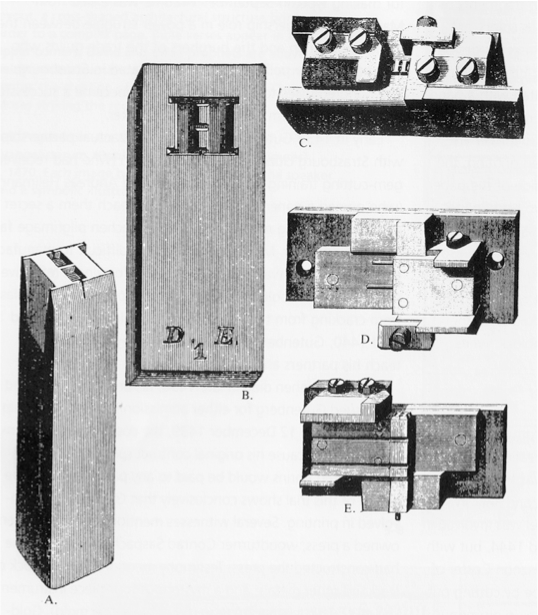by Danelle Cheney
1455: Mainz, Germany. Johannes Gutenberg nears completion on the first edition of the forty-two line bible with moveable type and machinery he’s spent years developing.1969: Los Angeles, USA. Charley S. Kline sends the first message across an early version of the internet: “LO.” He was attempting to type “LOGIN,” which he successfully did on the second attempt.
Are these two moments in time comparable? Absolutely. One could argue that without Gutenberg’s work in the 15th century, you wouldn’t be reading this on your smart phone, tablet, or personal computer.
Before the invention of moveable type, books were rare and prized. Literacy was limited to scholars and those with the means and money to learn how to read, sometimes with varying results; editorial and visual standards were rarely consistent. From approximately 750-1300 AD, paper making and block printing spread from China to Europe (largely because of the Crusades). The Chinese had been making paper since at least 105 AD, and an alchemist by the name of Pi Sheng had invented a moveable type system that was functional but nearly unmanageable thanks to the over 44,000 characters that comprise written Chinese. Sheng created letters for printing from a mixture of glue and clay that were cured by baking; they required a sophisticated system (sorted by rhyme) just to keep them organized for printing. It’s no wonder Asia continued to favor relief printing (developed from either engraved seals for documents or ink rubbings from important stone carvings—we’re not entirely sure).
By the 14th century, the Renaissance was beginning in Europe. The availability of paper, thirst for knowledge and new popularity of universities was calling for innovation—printers all over the continent were working toward a mechanization of print that would allow them to produce more books more quickly. In 1424, Cambridge’s library contained only 122 books. Relief printing and illumination alone could not keep up with the demand for literature.
Johannes Gutenberg’s training as a goldsmith was invaluable when he set out to develop a system of moveable type. His expertise allowed him to create an alloy consisting of 80% lead, 5% tin, and 15% antimony: a mixture that neither expands or contracts when heated or cooled, essential for the accuracy at small sizes that moveable type requires. His casting system allowed him to create large amounts of type quickly and efficiently, which was imperative when he needed to use as many as 50,000 characters at one time.

[2] Gutenberg’s casting system. A: Punch. B: Matrix. C: Type mold (with matrix removed to show a newly cast H). D and E: Type mold (opened so the newly cast H can be removed). Image via Meggs’ History of Graphic Design.
Of course, we could talk about manufacturing developments, transportation innovations, and printing technologies that come next on the historical timeline—but none of those developments facilitated the same kind of large-scale influence on communications and education that the internet has arguably had on modern culture.
The two advances are possibly at odds, however, if we consider the emphasis each event placed on quality. Gutenberg’s Bible is a canon of quality for printers and historians today; its excellence in craft is undisputed. Our ever-connected world has placed the technology to produce original content in nearly everyone’s hands; that immense power is in some ways both an evolution and devolution of craft and creativity. More opportunities to create means increased probability of lower quality—but, perhaps in the same way craftsmen of Gutenberg’s time were challenged by the invention of moveable type and used it to improve their skills, so are we exploring the potential of self-published content and improving our skills.
Gutenberg may not have been able to finish the printing of his masterpiece himself, but he did go on to open a new print shop and produce several more works before his death in 1468. His invention of moveable type in Europe—in a culture whose alphabet systems benefited hugely from an adaptable, flexible system—laid the groundwork to distribute information that would have been previously out of reach for the average individual. The technology to network almost instantly with someone on the opposite side of the world has changed the way we learn, communicate, and work. The impact of moveable type and the impact of the internet 500 years later are undeniably comparable in cultural importance.






